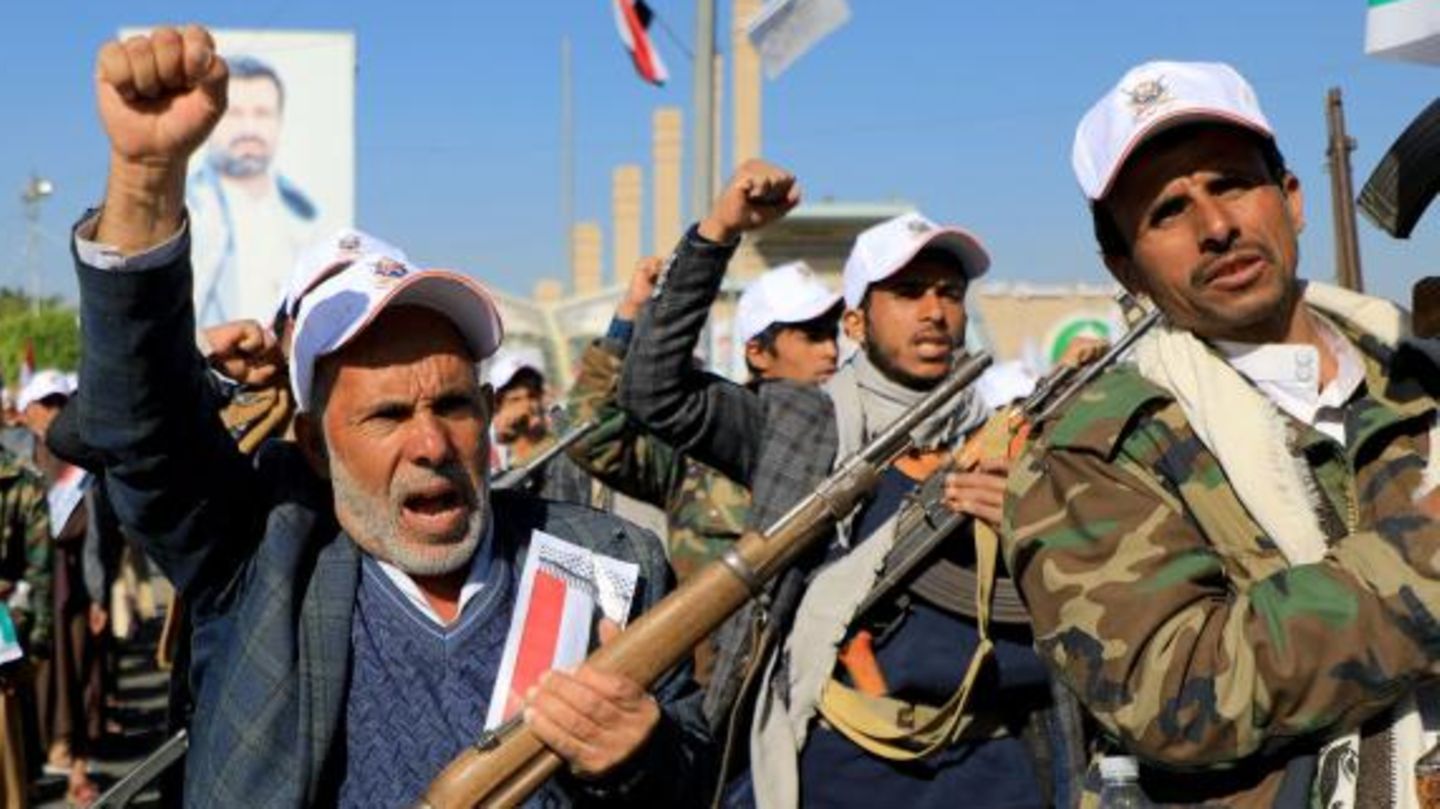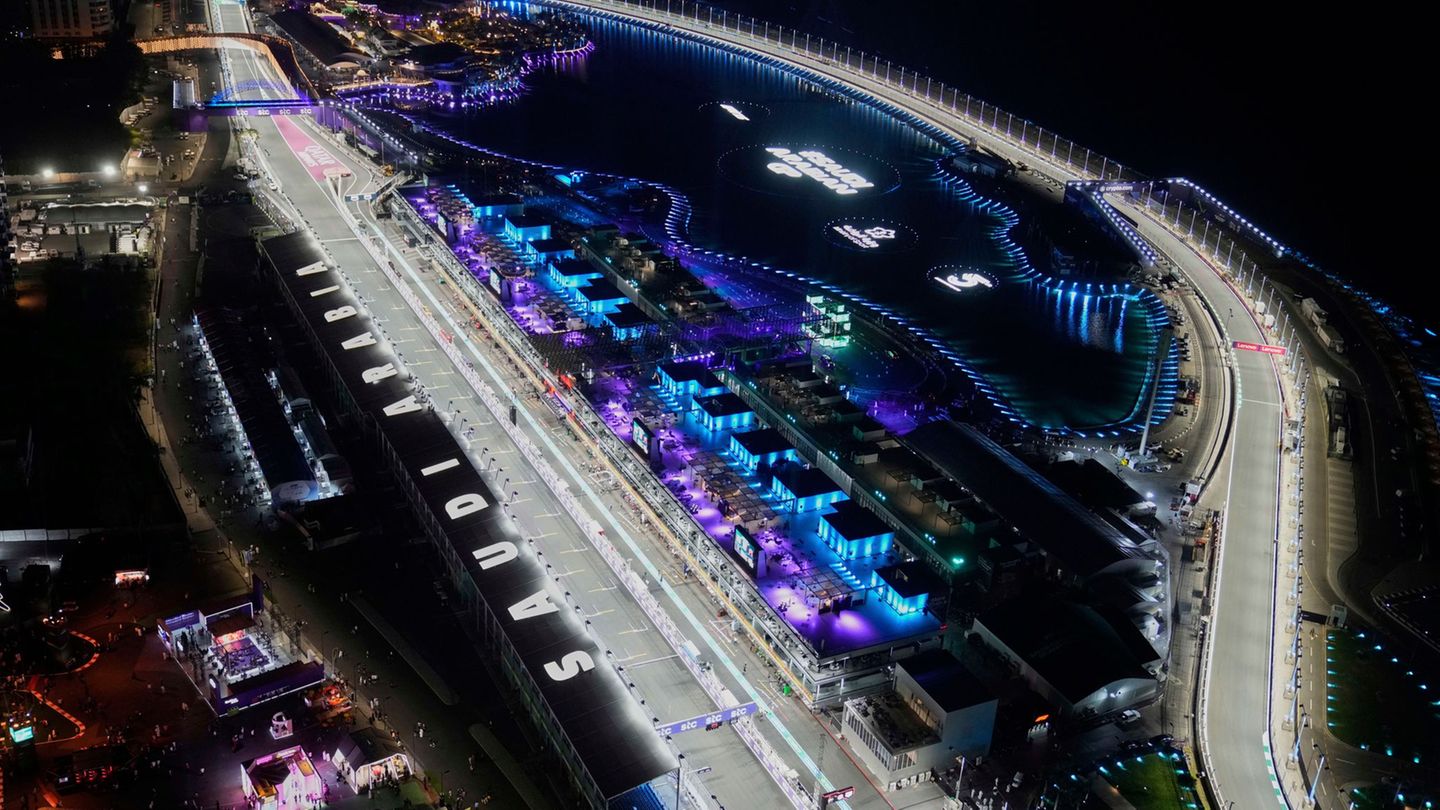Since the beginning of the Gaza war, attacks by Houthi rebels in the Red Sea have increased. Now an international alliance is forming to protect merchant ships against such attacks. Who are the Houthis – and what do they want?
For a long time, the Houthi rebels were underestimated as a limited threat to Israel and the USA. In the Gaza war, the rebels from Yemen have now become the new threat. Over the past few weeks, they have turned the Red Sea into a sideshow to the war between the Islamist Hamas and Israel. The Houthis had increased their attacks on merchant ships and recently attacked several freighters.
An international coalition against attacks on cargo ships by pro-Iranian rebels is currently taking shape: Great Britain and Italy want to send warships or have already done so. US Defense Secretary Lloyd Austin had previously announced a “multinational security initiative” to protect shipping in the Red Sea. In addition to the USA, it will include Bahrain, France, Great Britain, Italy, Canada, the Netherlands, Norway, the Seychelles and Spain. Germany is not initially involved, but is considering participation, according to the Federal Ministry of Defense.
The most important questions at a glance:
Who are the Houthi rebels?
The Houthi rebels officially call themselves “Ansar Allah” (“Supporters of God”). They belong to the Shiite movement of the Saidis, whose imams ruled in northern Yemen until 1962. Since then, they have repeatedly launched uprisings against the Sunni leadership in the capital Sanaa. They took control there in 2014 and now control large parts of the country, especially in northern Yemen. They owe their name to their former leader Hussein al-Houthi, who turned the group into a political movement. About a third of Yemen’s population are Saidis.
How strong is the militia?
A 2019 analysis estimated there were 180,000 to 200,000 armed fighters. These have access to tanks and technical vehicles as well as anti-tank guided missiles, ballistic missiles, drones and cruise missiles. Since their uprising in Yemen in 2014, the Houthis have been fighting against the government and a military alliance led by Sunni Saudi Arabia, which wants to prevent the Houthis from expanding their influence even further in the neighboring country. The war has resulted in a humanitarian catastrophe in Yemen, with an estimated 377,000 deaths.
Who supports the Houthis?
Especially Iran and Hezbollah in Lebanon. According to experts, without their help, the Houthis would not have been able to build up their weapons arsenal – including missiles with a range of up to 3,000 kilometers. The Al-Kuds Brigades, part of an elite unit of the Iranian armed forces, provided various types of weapons starting in 2014, writes the US think tank CSIS. The Al-Kuds Brigades and Hezbollah also trained the fighters in order to improve the Houthis’ combat tactics and enable them to use rockets and drones. The weapons are said to have been smuggled into Yemen by sea. Both Iran and Hezbollah deny or downplay the connections for their Shiite co-religionists.
Why do Iran and Hezbollah support the rebels?
Israel has been Iran’s declared archenemy since the Islamic Revolution of 1979. Tehran has been expanding its ties in the region since the 1990s to create an “axis of resistance” against Israel with the support of Shiite militias. The Houthis are part of this, as is the Hezbollah movement. Because Hezbollah successfully drove Israel’s army out of Lebanon, the militia is a kind of role model and mentor for the Houthis in their civil war, even though both groups belong to different Shiite movements.
Middle East conflict
Germany “stands firmly on Israel’s side.” What about the rest of the world?
What do the Houthis want?
Above all, the rebels want to rule the entire Yemen and gain international recognition for this. In the north they have set up a dwarf state in which they enforce their ideology in a totalitarian manner, presumably also by torturing and killing critics and journalists. Since 2016, they have increasingly attacked infrastructure in Saudi Arabia and the United Arab Emirates, especially oil facilities, in order to undermine their military operations in Yemen. At about the same time, they began attacking merchant ships near the Bab al-Mandab Strait.
How dangerous is the militia for Israel and the region?
The Houthis do not have as large a supply of weapons as Hezbollah in Lebanon. With their drones and missiles, they still pose a danger, especially to shipping traffic in the region as well as to US military bases. Further attacks on ships could severely damage the economy and throw the oil market into turmoil. One of the most important shipping routes in the world, through which around ten percent of all world trade passes, runs past the Yemeni coast. As attacks increase, so do concerns about an even greater escalation in the region.
How do the Houthis feel about the Gaza war?
The Houthis have declared their solidarity with Hamas and have also been attacking Israel since October 7th. They attacked Israel from the south of the Arabian Peninsula with drones and missiles, hitting the southern Israeli city of Eilat. They have also threatened to attack all Israel-related ships. In a spectacular operation, they boarded a cargo ship by helicopter with assault rifles and filmed the process for propaganda purposes. During the attacks on cargo ships, a US destroyer also intercepted several drones.
What goals are the rebels pursuing with these attacks?
The attacks coincide with the Houthis’ anti-Semitic and anti-American rhetoric and hopes of gaining wider recognition as part of Iran’s “Axis of Resistance.” They also fit the rebels’ portrayal of being victims of a conspiracy between Israel, the United States and Saudi Arabia, which they use to appeal to the Yemeni population. With the attacks, the rebels also distract from their own problems and demonstrate their strength.
Source: Stern
I have been working in the news industry for over 6 years, first as a reporter and now as an editor. I have covered politics extensively, and my work has appeared in major newspapers and online news outlets around the world. In addition to my writing, I also contribute regularly to 24 Hours World.




